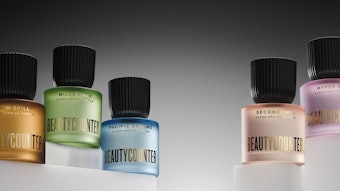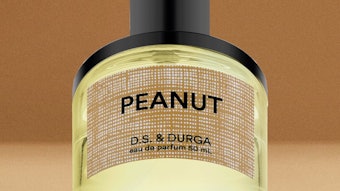Considering the elasticity of the term in recent years, defining natural can be a complex task, especially in fragrance and personal care. As Daniel Fabricant, vice president of scientific and regulatory affairs at the Natural Products Association (NPA; www.naturalproductsassoc.org) puts it, “With the term ‘natural,’ especially in personal care, it just seems to be free range. Labels are daunting for consumers, but also for some retail people. The most natural thing in [some companies’] products is the picture of the flower on [the label]. If the independent natural products retailers that have been doing this for years were confused, you can be assured that there was confusion at the mass-market level and across other channels.”
Jack Corley, executive vice president of Trilogy Fragrances, works closely with colleagues such as Burt’s Bees’ chief marketing and strategic officer Mike Indursky, and Aubrey Organics’ general manager Curt Valva, in concert with the NPA, and adds, “When we [Trilogy] sit and talk with customers, they say ‘there are too many standards out there.’ They confuse the natural standards all the time with the organic standards. It’s a constant problem. You have to try and educate them—even the bigger companies. They link the two together. We fully support what these committees are doing on the organic side, but there are just too many standards. Of course organic products have to be natural, but not all natural products are organic. What my customer base has been asking me is:
‘I’m going to come out with this skin cream and I don’t know if it’s as natural as I can get it, but I can’t get foaming agents in the organic world, but I know that some of these foaming agents are made from plant materials—they’re natural, but they’re not regulated under USDA NOP. But I still want to do the best I can to introduce a product that’s good for the consumer. Why can’t I just call it natural?’ ”
This sort of complaint spurred Corley and his colleagues to partner with the NPA in the creation and evolution of a natural standard for personal care. “There’s mass confusion in the organic personal care sector,” he says, “with people trying to figure out what they can and can’t do. And you’ve got to imagine, if you’re a product development person working for a large company, your boss is in your office every day showing you another article he read about the explosion in the organic and natural personal care segment and asking: Where are we on this? And the product development person is sitting there saying, ‘I just don’t know what to do.’ ”
Fabricant explains that the beauty industry cannot simply wait around and miss the boat on the naturals boom. “The consumers, in this day and age, want to drive hybrids, they want to get off petroleum dependence ... they want to do something good for the environment and have a low threshold of tolerance for synthetics. People, whether right or wrong, definitely associate something more positive with something that’s natural as opposed to something that isn’t. All of those [factors] combined to form the perfect storm to the point that ‘natural’ has been misused randomly during the past few years in terms of marketing—even on cans of soft drinks.” Meanwhile, the U.S. Food and Drug Administration has not made a serious move to define the term. “Someone needed to do something because of consumer confusion,” says Fabricant.
In light of this, the NPA set out to 1) define natural as it relates to personal care; and 2) draw up guidelines for natural personal care formulation, taking into account technical necessities that may not be able to be addressed with naturals at this time. The guidelines, announced on May 1, 2008, have led to the successful assessment of a number of products—including those launched by Burt’s Bees, some of which have begun hitting shelves bearing the NPA natural seal.
“The people who are building natural products, from manufacturing all the way through the supply chain, are dedicated to doing the right thing,” says Fabricant. “This gives them a forum to interact in, including smaller firms that are trying to get up to speed and come up with ways to use natural formulations that they may not have considered or been aware of in the past. That really helps strengthen the supply chain as well.”
Fragrances Under the Natural Personal Care Standard
The list of allowed natural ingredients is an evolving one, as is the entirety of the NPA’s certification program. In time, new extraction techniques for natural fragrance materials may be allowed, but synthetic materials will continue to be pushed out. Among the synthetic ingredients temporarily allowed, pending an expected phase-out around 2010, are “non-[diethyl]phthalate, non-irritating synthetic fragrances.” Because total use of allowable synthetic ingredients is capped at 5% of the total formula, synthetic fragrances can be applied to natural personal care products. However, the NPA underscores that “synthetic ingredients are targeted to be eliminated in phase two of the standard, currently set for 2010.” The only exemptions expected are certain nature-identical non-fragrance preservatives. As alluded to previously, diethylphthalate is considered, under this standard, to be a “synthetic fragrance component that is a potential toxin.” As Corley says, “The standard [is expected to require] that the companies that want to be certified with the NPA have to have 100% natural fragrance by Jan. 1, 2010.”
The formulation implications are many. For example, Corley says, “When you’re creating a fragrance in the traditional world, you’re accustomed to using petrochemicals as building blocks. Perfumers who would create a natural fragrance [under NPA] could not work with petrochemicals. There are a number of other limiting factors with the products that you use, including methoxylated products or sodium sulfate.”
Yet, he says, the standards are built to evolve, including many voices in the process. “We refer to this as a living document,” Corley says. “We’re still in the process of soliciting input from people in the personal care and fragrance community and the ingredients side. There are obviously a lot of those companies that want to be involved in the standard development going forward.” For example, he says, CO2-processed fragrance materials are not on the current list, but that is likely to change.
Transparency
The NPA standard, Fabricant underscores, is not a company certification, but rather a product certification. However, companies must have at least 60% of its products meet the standard to participate—in order to avoid any greenwashing. Specification and technical sheets, as well as some limited formulation information, are among the documents that must be submitted. “With nomenclature,” Fabricant says, “it’s never a straight line. One person’s extract is another’s extract filled with parabens. But on the label, it reads the same. We knew from the beginning that we would need a little extra information: Trust, but verify.” Here, Fabricant stresses that proprietary information is respected and that full formula disclosure is not required. In addition, future standards will include on-site visits.
The Future of Harmonization
“I think the dust has to settle on the organic standards,” says Fabricant, addressing the possibilities of future harmonization of standards. “There are going to have to be concessions made among those [organizations] for one standard to be reached. Even if you have only two standards, then that confusion is still out there. From our end, I don’t see how we can harmonize with seven different standards.”
Corley notes that organic personal care standards have been fractious and confusing, with different groups around the world presenting their own metrics. Some have taken into account certain practical green chemistry allowances, while others have not. In the absence of more universal organic personal care standards, and in the spirit of providing for necessary technical concessions, the NPA sought to create an evolving natural definition and natural personal care guidelines.
NPA has reached out to organic and international organizations, but all efforts are in their infancy at this time. “We would like to have harmonization because it benefits the consumer and the industry in terms of trade across borders and clarifying to consumers—as well as manufacturers and supply chain—as to what is natural.”
“The way this process would have worked in an ideal world would be that the natural standard would have evolved into an organic standard,” says Corley. “That’s not what happened. The organic movement spun off the natural movement. It’s backwards, but today we have established a natural personal care products standard. It’s the only one in the United States.”
“What we’re trying to do,” Corley concludes, “is be all-inclusive with this standard so that everybody’s voice is heard. What we don’t want is to have nine different naturals standards organizations three years from now.”
Jeb Gleason-Allured is the editor of Perfumer & Flavorist magazine.










